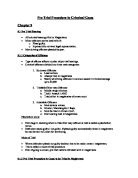The Small Claims Procedure
The small claims procedure is regulated by RSA 503 in 1973. It is a simple, speedy, and informal method by which an individual appears before a judge of the district or municipal court, presents his or her claim, and explains why another person or business owes money to him or her. Small Claims Court can award up to $5000 in damages (larger claims can be heard, but the maximum that can be awarded is $5000).
Although not required in Small Claims Court, any persons or businesses involved in the proceedings may be represented by a lawyer if they wish. Another aspect of a small claims proceeding is that a judge may ask to hear any evidence deemed relevant and proper, since the technical rules of evidence do not apply in a small claims proceeding.
If the small claim exceeds $1500, the person or business being sued has a right to a jury trial. The defendant must file a written request for a jury trial within five business days of the filing of the small claim, unless the municipal or district court grants more time where the defendant has shown good cause. The small claim will then be transferred to the Superior Court for resolution.
Disadvantages of small claims
There are long standing concerns about the small claims procedure, which have not been tackled by the 1999 reforms. Small claims are not necessarily simple claims; they may involve complex and unusual points of law. The procedure is not simple enough. The consumers’ Association reported in 2000 that the process was still ‘quite an ordeal’ and the level of formality varied widely. The submissions of both the National Consumer Council and the National Association of Citizens’ Advice Bureaux to the Civil Justice Review echoed this feeling. The Civil Justice Review recommended that court forms and leaflets should be simplified, because it is difficult to fill out for people who have not got any knowledge about law at all. The system is still largely used by small businesses chasing debtors, rather than by the individual consumer for whom it was set up. A consultation paper was issued in 1995 suggesting that, in limited cases; the judge might be given the power to award an additional sum of up to £135 to cover the cost of legal advice and assistance in the preparation of the case. I think this idea would really be useful for claimants, and this would give a huge encouragement to the claimants to come to the court. Especially for those who cannot actually afford to hire their own lawyer.







